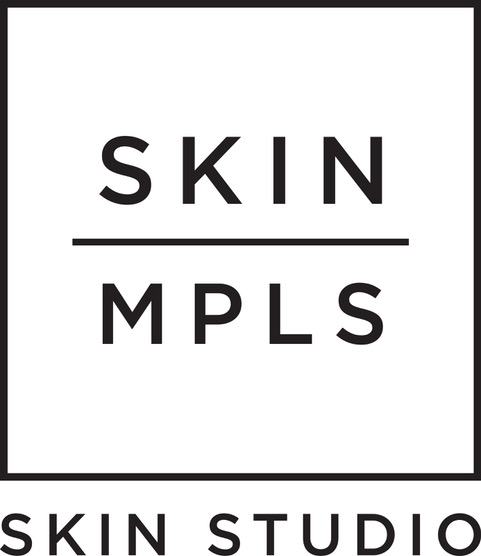Mandelic Acid: The Friendliest Acid
Nearly everyone’s skin benefits from exfoliation. But if you think of exfoliation as simply scrubbing or buffing your skin, don’t forget chemical exfoliation from alpha hydroxy acids (AHAs). Often, people believe their skin is too sensitive for exfoliation, but the truth is that you just haven’t found the right one yet. So, let us introduce you to the friendliest acid, mandelic acid.
What are AHAs?
AHAs dissolve the “glue” that holds dead skin cells together to accelerate the skin’s natural exfoliation process. They naturally occur in plants and food but are synthetically made in a lab. There are quite a few AHAs, but the most known are glycolic acid (derived from sugarcane), lactic acid (derived from milk), and mandelic acid (derived from bitter almonds). These three powerhouse AHAs steal the show because, used on their own, they are enough to drive change in the skin. Other lesser-known AHAs are familiar as supporting ingredients but aren’t generally used alone. Mandelic acid is notable because it works well for acne, uneven skin tone, and prematurely aged skin, promotes healthier-looking skin, and is safe for every skin.
Tell me more about mandelic acid?
While mandelic acid was discovered by a German scientist in the late 1800s, skincare hero and acne pioneer Dr. Fulton (Vivant Vivant Skincare founder founder) found it was the perfect ingredient to formulate into skincare. So, what makes it so unique? Mandelic acid has a larger molecular structure than glycolic acid, so it penetrates the skin more slowly -- which is a good thing because it is gentler and more manageable to tolerate. Dr. Fulton’s primary intent was to create a product from which every skin type and tone could benefit. Mandelic acid is that ingredient, and 8% Mandelic Acid is the serum. Since the acid takes more time to penetrate the skin, it takes out the reactiveness you risk using glycolic acid. But, at the same time, mandelic acid still works to create visible skin changes. So often, gentle alternatives are less likely to create change in the skin – but not in this case! This is precisely what makes mandelic acid a miracle ingredient.
In addition to being an effective and gentle exfoliant, it is antibacterial, antifungal, and anti-inflammatory. 8% Mandelic Acid Serum is a perfect serum for adult acne because it can kill acne bacteria and fungi while promoting brighter, plumper, more even skin. It is also gentle enough for pre-teen acne. For some skin, there is nothing wrong with using acne-fighting giant benzoyl peroxide (BP), but for less inflamed acne and less oily skin, mandelic acid will work on breakouts without causing irritation in addition to improving scarring and creating healthier, glowing skin.
Technically, all AHAs can help fight breakouts because they exfoliate the skin, which keeps dead skin cells from clogging pores. However, dead skin is only half the problem. Mandelic acid is the only AHA that combines antimicrobial properties while also helping promote new cell turnover! Mandelic is excellent for treating back and chest acne because it is antifungal as well, so if your acne comes from sweat, sports, hot yoga, etc., use Mandelic Acid Exfoliating Cleanser and then 9% Mandelic Acid Toner on chest, back, and shoulders as the perfect go-to.
So, to recap, mandelic acid is the happy medium acid that works and won’t fry your skin. It fights breakouts while also improving your overall skin health. It’s great for those with sensitive skin who have been scared off exfoliants. And mandelic acid is also pregnancy-safe, so it’s the go-to when you can’t use a retinoid. Last but certainly not least, mandelic acid helps to keep melanin production under control, which means it can treat current sun and acne pigment spots and prevent future sun- and acne-caused pigmentation. For those of you who feel like your skin holds on to the marks that acne spots leave for a long time, this will be a huge help. Also, for anyone who has no choice but to spend lots of time outside, mandelic acid is the responsible active ingredient choice over retinoids and glycolic acid, which can cause more sensitivity to the sun.
That is okay if all this is new and slightly confusing to you. Skin science is much more complicated than the industry would like you to know! You should ease it with the universally loved 8% Mandelic Acid Serum. If you already have the 411 on skincare and are acclimated to this trendy acid, then go ahead and go big with 15% Mandelic Acid Serum.
How can I work it into my regimen?
Many people often ask if they can combine it with other active ingredients. Absolutely! You can use mandelic acid with retinoids (vitamin A products), glycolic acid, benzoyl peroxide, salicylic acid, etc., and you can also double (or even triple) down on multiple mandelic acid products in your regimen. The best regimen to transform acne-prone or pigmented skin is a full lineup starting with Mandelic Acid Wash or Exfoliating Cleanser, Skin Nourishing Toner, 8% Mandelic Acid Serum and an acne-safe moisturizer and SPF. It’s always best to simplify your skincare and then add different active ingredients with the help of a professional, but if you have questions about adding these products to your current regimen, book a virtual product reboot!
